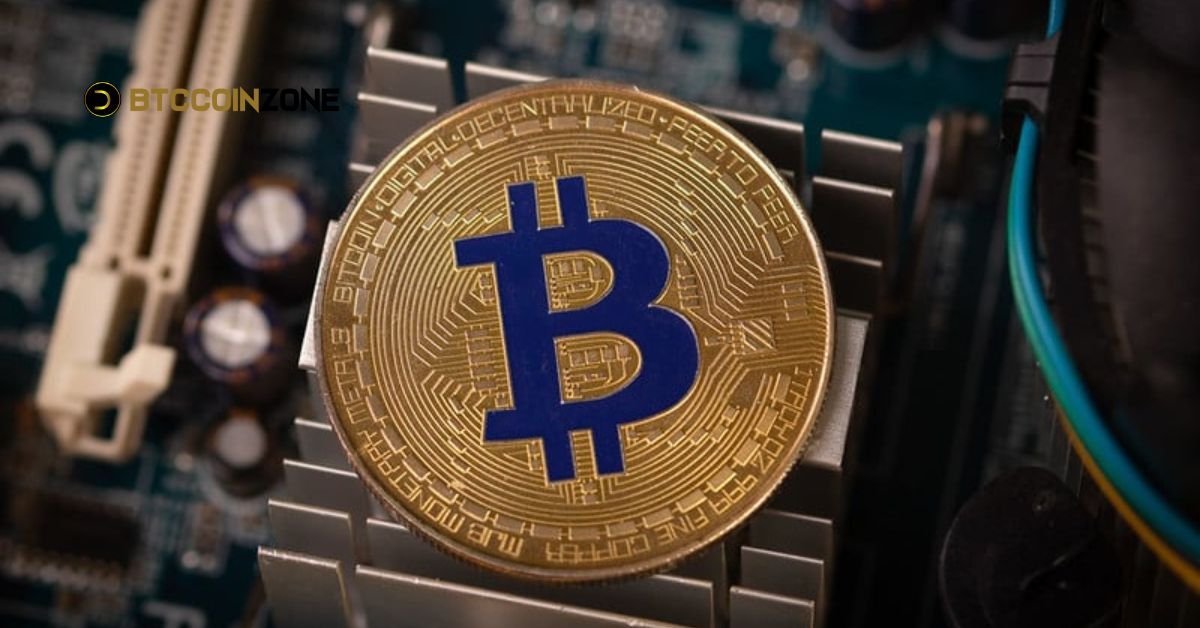Bitcoin Mining Pro: Bitcoin mining generates fresh bitcoins and verifies network transactions. This decentralised and important mechanism keeps the blockchain secure and operational. This guide will explain Bitcoin mining’s mechanics, equipment, profitability, and more. It will also help beginners start mining, and experienced miners enhance operations.
What’s Bitcoin Mining?
The process of validating transactions on the Bitcoin network, known as “mining,” requires solving complicated mathematical problems. When miners solve these difficulties, they compete to add a new block to the blockchain. The first miner to do so gets to keep all the freshly created bitcoins and all the transaction fees from the transactions in the block.
How Mining Works
- Transaction Collection: Miners collect pending transactions from the Bitcoin network and group them into a block.
- Hashing: Miners must solve a cryptographic puzzle by finding a hash that meets a specific target. The hash is a 64-character string generated by the SHA-256 algorithm, Bitcoin Mining Pro, which converts input data into a fixed-size output.
- Difficulty Adjustment: The Bitcoin network adjusts the difficulty of the hashing process approximately every two weeks to ensure that new blocks are added to the blockchain roughly every ten minutes.
- Block Addition: Once a miner finds a valid hash, they broadcast the new block to the network. Other miners verify the block, which is added to the blockchain if confirmed.
- Reward: The successful miner receives a block reward, currently 6.25 bitcoins (as of 2021), and transaction fees from the transactions included in the block.
The Importance of Bitcoin Mining
Bitcoin mining plays a critical role in maintaining the security and integrity of the Bitcoin network. Here are some of its essential functions:

- Transaction Verification: Miners validate and confirm transactions, ensuring they are legitimate and preventing double-spending.
- Network Security: By competing to solve mathematical problems, miners contribute to the network’s security. The more miners there are, the more secure the network becomes.
- Monetary Policy: Mining is an integral part of Bitcoin’s economic policy. The supply of bitcoins is capped at 21 million, and mining is the mechanism for introducing new bitcoins into circulation.
- Decentralization: Mining ensures that no single entity controls the Bitcoin network. It promotes decentralization, which is one of the core principles of cryptocurrencies.
Equipment for Bitcoin Mining
To become a successful Bitcoin miner, you need the right equipment. The following components are essential:
Mining Hardware
There are several types of hardware available for Bitcoin mining:
- ASIC Miners: Application-Specific Integrated Circuits (ASICs) are the most efficient hardware for mining Bitcoin. They are designed for mining and offer high hashing power with lower energy consumption.
- FPGA Miners: Field-Programmable Gate Arrays (FPGAs) are customizable hardware that can be programmed for various tasks, including mining. They offer a good balance between performance and power consumption but are less common than ASICs.
- GPU Miners: Graphics Processing Units (GPUs) can be used for mining, but they are less efficient for Bitcoin mining than ASICs. They are more commonly used for mining other cryptocurrencies.
Mining Software
You’ll need mining software to connect your hardware to the Bitcoin network. Popular mining software options include:
- CGMiner: One of the most widely used mining software programs, CGMiner is compatible with ASIC and FPGA miners.
- BFGMiner is similar to CGMiner but designed for more advanced users. It supports ASIC and FPGA hardware and offers more customization options.
- EasyMiner: A user-friendly interface for beginners, EasyMiner supports CPU and GPU mining.
Mining Pool
Joining a mining pool can increase your chances of earning rewards. In a mining pool, miners combine their computational power to solve blocks more efficiently. Bitcoin Mining Pro: When a block is mined, the rewards are distributed among the pool members based on their contributed hashing power. Popular mining pools include:
- Slush Pool: One of the oldest mining pools, Slush Pool offers a reliable platform for miners.
- Antpool: Operated by Bitmain, Antpool is one of the largest mining pools in the world.
- F2Pool: A global mining pool that supports various cryptocurrencies, including Bitcoin.
Mining Profitability
Bitcoin mining profitability determines if hardware, electricity, and operational costs are worthwhile for all parties. Bitcoin price, mining difficulty, equipment performance, and electricity expenses affect mining profitability. Miners can maximize income by considering these factors in the competitive Bitcoin mining world.

Electricity Costs
Bitcoin miners spend most on power. Complex mathematical problems require computational power, making mining hardware energy-intensive. Bitcoin miners must consider power costs. Regional, energy, and municipal regulations affect power pricing. Low electricity prices can aid miners, but high rates hinder them. The efficiency of mining hardware affects electricity expenses. Technology that hashes faster and consumes less power lowers energy prices. Solar and wind power minimize electricity prices and environmental impact for many miners. Hydroelectric dams may attract miners since electricity is cheaper and more sustainable. Bitcoin miners must manage electricity expenses to get by.
Mining Difficulty
As more miners join the network, the mining difficulty increases. This means that it becomes harder to mine new blocks, which can reduce profitability. Bitcoin Mining Pro: Regularly monitoring the network’s difficulty can help you make informed decisions.
Bitcoin Price
Bitcoin’s cryptocurrency price changes due to many variables. Bitcoin continues to attract investors, traders, and the public with its high returns. Since its 2009 debut, Bitcoin’s price has ranged from pennies to $69,000 in November 2021. Bitcoin prices depend on many factors. Demand, especially from institutional investors, raises prices. Technology, macroeconomics, and regulatory news can cut prices. However, Bitcoin’s 21 million-coin cap creates scarcity, increasing value. News, social media, and community arguments affect Bitcoin’s price. As more people and businesses use Bitcoin as a store of value or means of trade, its price will likely remain a financial concern, therefore investors must be alert.
Hardware Efficiency
Bitcoin mining profitability and energy utilization depend on device efficiency. Bitcoin mining efficiency compares equipment performance to electricity use. Mining with high-efficiency gear that solves more hashes per watt maximizes returns and reduces costs. Bitcoin Mining Pro: Bitcoin mining is more efficient using ASICs. GPUs trail Antminer S19 and Whatsminer M30S ASIC miners. These devices help Bitcoin miners compete by increasing hash rates. Hash rate, power consumption (watts), and energy cost must be considered when evaluating hardware efficiency. However, Higher hash rates and lower power use boost efficiency. The proper mining hardware and energy efficiency can enhance revenues and reduce carbon emissions, making mining more sustainable. Mining technology must be updated to maintain hardware efficiency.
Mining Rewards
The block reward for mining Bitcoin is halved approximately every four years in an event known as the “halving.” The next halving is expected in 2024, Bitcoin Mining Pro: reducing the reward from 6.25 to 3.125 bitcoins. Understanding the implications of halving events is crucial for miners.
Steps to Start Mining Bitcoin
- Research and Plan: Thorough research is essential before diving into Bitcoin mining. Understand the costs, potential returns, and risks associated with mining. Create a detailed plan that outlines your budget, equipment, and operational strategy.
- Choose Your Equipment: Choose the mining hardware that best fits your budget and goals. Due to their efficiency, ASIC miners are the most popular choice for Bitcoin mining. Consider purchasing from reputable manufacturers to ensure quality.
- Set Up Your Mining Rig: Once you have your equipment, set up your mining rig. Connect your hardware to the power supply and install the mining software on your computer. Ensure that your internet connection is stable, as mining requires continuous connectivity.
- Join a Mining Pool: To increase your chances of earning rewards, consider joining a mining pool. Register with your chosen pool, configure your mining software to connect to the pool, and start mining.
- Monitor Performance: Regularly monitor your mining performance, including hash rate, temperature, and electricity consumption. Adjust your settings as necessary to optimize performance and profitability.
- Stay Informed: The cryptocurrency landscape is constantly evolving. Stay informed about market trends, mining developments, and regulatory changes that may impact your operations.
The Future of Bitcoin Mining
As Bitcoin continues to gain popularity, the future of mining will likely evolve. Here are some potential trends and developments to watch for:
- Environmental Concerns: Bitcoin mining’s energy consumption has raised environmental concerns. As a result, there is a growing emphasis on using renewable energy sources to power mining operations. Miners may increasingly seek out green energy solutions to mitigate their carbon footprint.
- Advanced Mining Technologies: Innovations in mining technology, such as more efficient ASIC miners and improved cooling systems, could enhance mining profitability and reduce energy consumption.
- Regulatory Changes: Governments worldwide are considering regulations related to cryptocurrency mining. These changes may impact the profitability and legality of mining operations in various regions.
- The Role of Bitcoin in Finance: As Bitcoin becomes more integrated into traditional financial systems, mining may evolve to adapt to new use cases. This could include new financial products and services that rely on Bitcoin.
FAQs
1. What is the best hardware for Bitcoin mining?
The best hardware for Bitcoin mining is typically ASIC miners, as they are specifically designed for this purpose and offer the highest efficiency and hashing power. Popular models include the Antminer S19 and Whatsminer M30S.
2. How much does it cost to start mining Bitcoin?
The cost to start mining Bitcoin can vary widely depending on your chosen hardware, electricity costs, and additional equipment (like cooling systems). However, Initial investments can range from a few hundred to several thousand dollars.
3. Can I mine Bitcoin on my PC?
While it is technically possible to mine Bitcoin on a standard PC using a GPU, it is not profitable due to the high mining difficulty. ASIC miners are recommended for severe Bitcoin mining.
4. What is a mining pool?
A mining pool is a group of miners who combine their computational resources to increase the chances of mining a block. When the pool successfully mines a block, the rewards are distributed among the members based on their contributed hashing power.
5. How often do miners receive rewards?
Miners receive rewards when they successfully mine a block. The average time to mine a new block is approximately 10 minutes, which can vary depending on the network’s hashing power and difficulty.
Also Read: Bitcoin For Beginners: A Guide for Early Traders
In summary
Mining bitcoins is a difficult yet profitable undertaking that requires constant management, investment, and careful planning. A solid understanding of the principles of mining, the equipment required, and the variables that affect profitability can help you make wise choices when you start your mining career.Your ability to stay informed and flexible will be crucial to your success as the Bitcoin mining industry changes in the future.


















